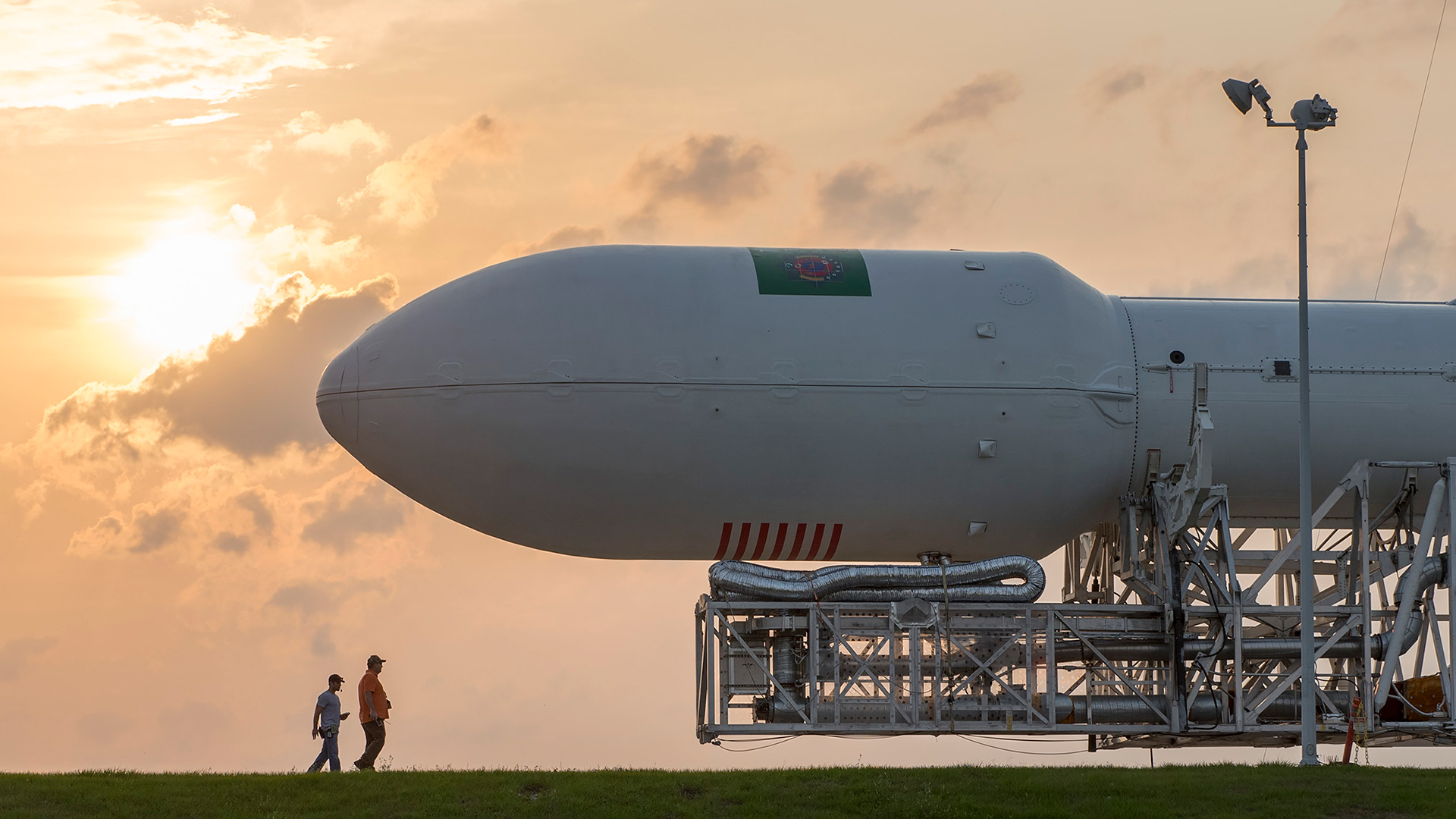

Last night’s SpaceX launch grabbed headlines around the globe for being the first commercial space mission to fling a satellite into orbit with a reused rocket. As it turns out, though, that wasn’t the only part of the Falcon 9 rocket to make its way back to Earth in a controlled manner after the mission. For the first time, SpaceX also successfully brought the nose cone of the rocket safely back to Earth, too.
So said Elon Musk himself, in a press conference after the event. “That was definitely the cherry on the cake,” Musk said, according to Popular Science.
The nose cone, also known as the fairing, protects the rocket’s payload (in last night’s case, the SES-10 communications satellite) as it blasts into the black at hypersonic velocities. It’s made from a pair of carbon fiber-wrapped aluminum half-shells, and stretches 43 feet from nose to tail and 17 feet across the beam. All of which means these puppies aren’t cheap; each nose cone costs a few million bucks, according to Musk. Yet up ’til now, both halves of the fairing were lost when it split in two and released its payload into the heavens.
Successfully bringing the fairing back to Earth means SpaceX is one step closer to its goal of making every part of its rockets reusable, a key part of its plan to bring down the costs of space flight.
Unlike the reused first stage of the Falcon 9, which touched down on an ocean-going landing pad barge nerdily named after a spaceship from a sci-fi series you’ve never heard of roughly eight minutes after liftoff, the nose cone was guided back planetside using maneuvering thrusters and parachutes.
“It’s like its own little spacecraft,” Musk said of the fairing.
It’s not clear where exactly that “little spacecraft” landed, however. But as The Verge points out, the rocket’s strictly-oceanic flight path means it likely splashed down somewhere. So, Aquaman, if you’re reading this and you come across a curved piece of junk with “SPACEX” written on the side…give Elon Musk a call.